
Tri’s Hervey Bay Squidding Tips
- Squid fishing is accessible, fun, sustainable and a great way to put some tasty fresh seafood on the table. In the Hervey Bay area, the northern calamari, or tiger squid, is the largest and tastiest target species.
- Jigging for squid isn’t just a night time option, they can be targeted right through the daylight hours.
- Tri prefers to target squid in less than a metre of water, because the visual aspect is entertaining and allows him to read the reaction of the squid and change his approach. But they can be easily found and caught around the Hervey Bay area in deeper water from 4-8m also.
- Clear water is essential. Squid are very visual hunters and tend to avoid areas where the water is dirty. Look for weed beds, shallow rocky reefs, a small gutter coming out of mangroves or even just undulations over a sandy bottom. Often you’ll find squid schooled up in these areas and can make casts to them.
- A little bit of current helps to make the squid active, even though they may not actually be sitting right in the current. Be prepared to move around and fish different areas on different tides. For example, they may move into mangrove channel areas on the incoming tide but may move away to other areas as the tide falls because the water tends to be a bit dirtier. Neapish tides often fish best because they give the angler a longer window of opportunity.
- Calamari tend to be darker in colour when they are inactive and lighter in colour when they’re when they are aggressive. Try different jigs and retrieves until you get a response from them.
- It’s important to set the hooks on a squid because a lot of them are lost when an angler thinks they are hooked but they’re actually just holding the jig. Squid tend to take a jig sideways and setting the hooks quite aggressively is important because it turns the jig around and presents the points to where they can hook a tentacle.
- Lots of people tend to work a squid jig very subtly, essentially a slow roll close to the bottom with occasional pauses. Tri finds that a much more aggressive, active retrieve style works better.
Tri’s Squid Fishing Tackle
- Reasonably light gear works best when you’re fishing crystal clear, shallow water in full daylight, but the rod needs to be able to cast the weight of the jig.
- Tackle that would normally be used for flathead fishing is about right for targeting northern calamari.
- A 10lb leader is about right. If flathead or longtom start smashing your squid jig you might need to up the leader to 15lb, but it will come at the cost of less bites. Tri will go down to 4lb leader at times if the water is clear and he can see squid rejecting lures.
- When landing squid, do it at the front or back of the boat and keep the rod horizontal to lead the squid away from the boat, then get the net behind it. Avoid pulling the squid towards yourself with the rod held high, or you’re likely to cop a faceful of ink. Leave them in the net over the side of the boat for a bit to empty their ink reserves.
Tri’s Best Squid Jigs For Northern Calamari
- The price of squid jigs is generally an indication of quality – quality jigs are usually $15-20, look for quality brands like Yamashita or Yo-Zuri. Cheaper jigs will catch squid, but tend to catch less than quality jigs because they don’t tend to be balanced properly for a good action. They also tend to be poorly made, resulting in the belly weight falling out if it hits a rock, or the fabric being ripped up quickly by squid. If you are only squidding occasionally, cheap jigs are ok. If you plan to do it a bit, get the better quality jigs.
- Squid jigs are available in a large range of sizes and there are also different sink rates within each of the sizes. Tri generally suggests a slow sinking jig in the 2.5 size, as these are usually taken readily by squid and can be worked through shallow water nicely.
- In deeper water, jigs that are both bigger and heavier may be preferred.
- Jig colour can be pretty important as squid are eagle eyed and you’re targeting them in full daylight in shallow water. Yamashita produce a very helpful colour selection guide that you can check out here.
- Tri’s approach is to start with a pretty aggressive retrieve with a fairly bright colour. This involves sharp, hard “jig, jig, pause” movements of the rod, reeling the whole time so there’s no slack line on the drop – squid almost always hit the jig on the drop. If they’re not responsive he’ll try a more subtle retrieve or will change jig colour, downsize leader or try other.
- Often you won’t know a squid has taken a jig you might not realise until you go to lift the rod and it feels like you’ve caught weed. Remember to set the hook!
Tri Ton
Hervey Bay Sportsfishing Guide
Tri has spent the past 8 years as a sportfishing guide working the Hervey Bay, Fraser Island and Great Sandy Straits area to help clients target a range of species from tunas to mackerel and of course trevally. Prior to that he had a decade working in the tackle trade, so his entire working life revolves around fishing. When he’s not guiding, Tri loves nothing better than to go and chase some squid.
Fraser Guided Fishing
Tri is able to take groups of 1-4 anglers on 1/2 and full day charters from Hervey Bay to target a host of species such as various mackerels, tunas, cobia, snapper, tunas and lots of different of trevally. You can get in touch with him via the Fraser Guided Fishing website.

Brisbane Squid Fishing Masterclass With Peter Herbst
Keen to perfect the art of catching quality squid from the shorelines of Moreton Bay? Peter Herbst’s masterclass on Brisbane Squid fishing will arm you with the knowledge you need to do exactly that. Land-based or boat based, everything you need to know is right here.
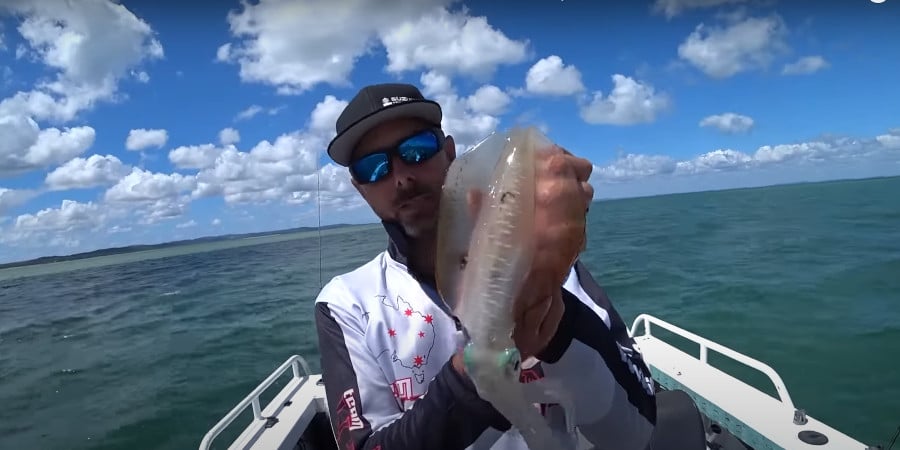
Squid Fishing Masterclass: Trolling Squid In Moreton Bay
Usually trolling isn’t the first technique that comes to mind when we talk about catching squid, but for Greg Lamprecht it’s proven to be a deadly technique.
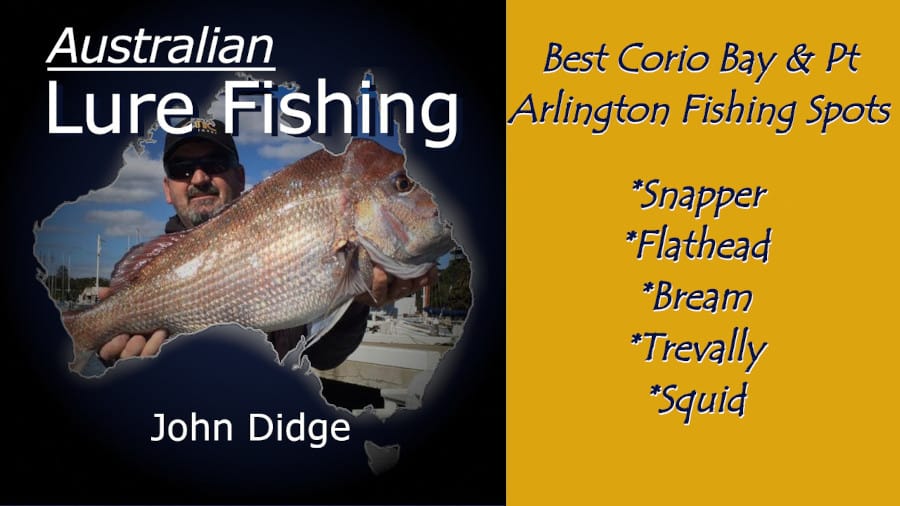
Episode 557: Corio Bay & Geelong Fishing Spots With John Didge
John Didge Radio Personality, Sponsored Angler John has over 40 years experience fishing Corio Bay. He's co-hosted various fishing radio shows for the Geelong region for over 30 years, written articles and presented fishing from stage. John is a soft plastic lure...
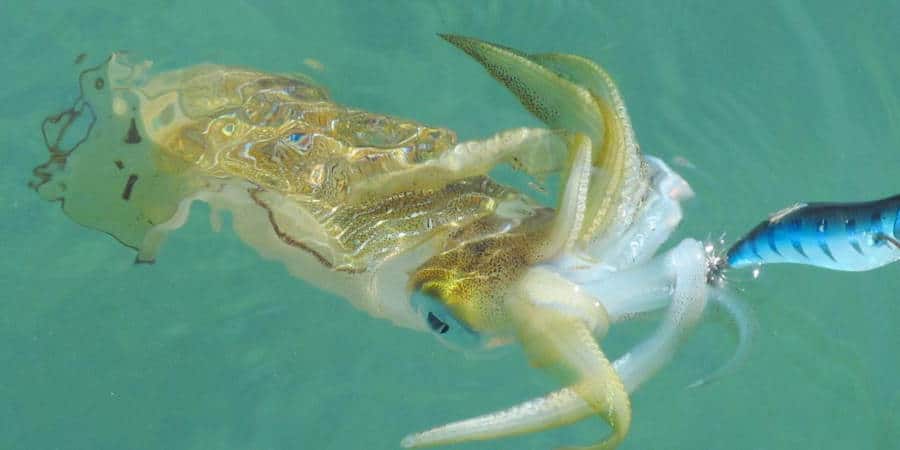
Exceptional Gold Coast Squid Fishing With Clint Ansell
The biomass of squid on the Gold Coast is extraordinary, so for anyone keen on pleasant a day out on the water with a tasty seafood treat at the end is in for a treat! Clinton Ansell is a GC based fishing guide who really knows his way around the squid – and so will you after listening to his interview!
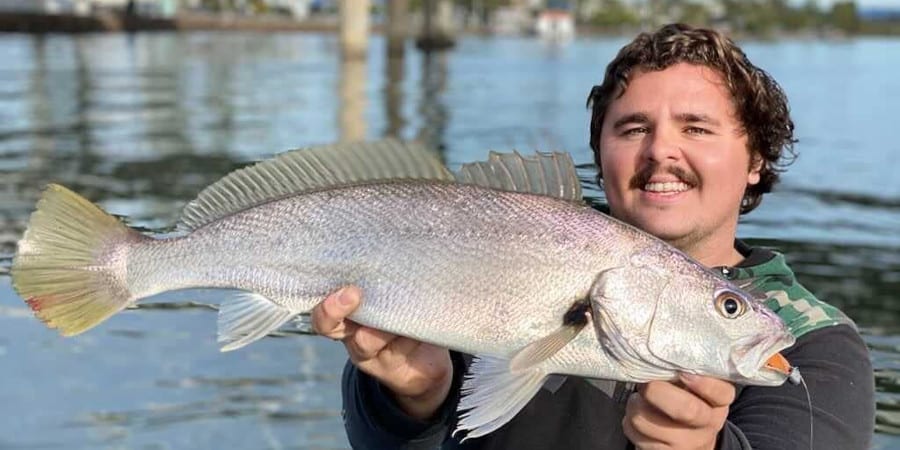
Episode 532: Top Brisbane Landbased Fishing Spots In Winter With Beau Rixon
Brisbane offers an astonishing range of land based fishing options to suit anglers of all skill levels, ranging from the hunble flathead right through to tailor, squid, bass and jewfish. Local fishing tutor and land-based guide Beau Rixon spends a lot of time fishing the area from the shore and teaching others to do the same, so for today’s episode I invited Bea to jump onboard and share some of his favourite land based spots.
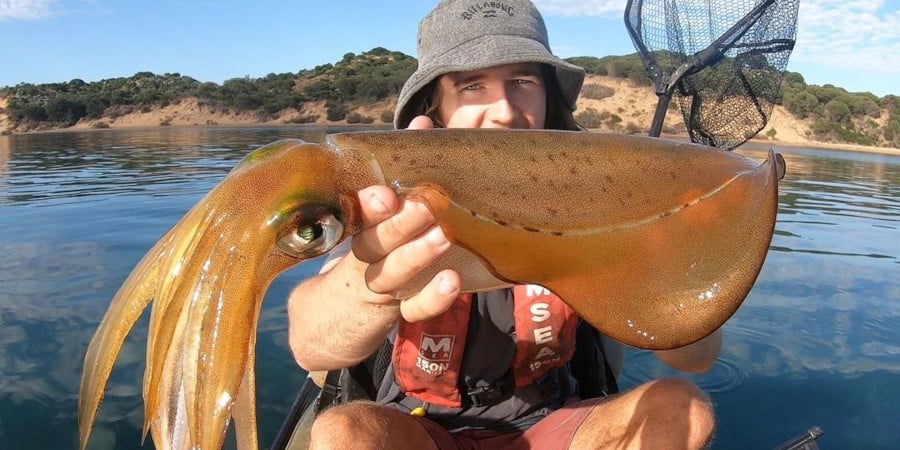
Episode 530: Phillip Island Squid With Nev Hayes
Squid are a great target at Phillip Island at any time of year, but today’s guest, Nev Hayes, reckons the winter months are when the really big squid come out to play. To qualify this statement, he caught a 50cm hood length squid just a week before this interview!

Brisbane Squid Fishing Masterclass With Peter Herbst
Keen to perfect the art of catching quality squid from the shorelines of Moreton Bay? Peter Herbst’s masterclass on Brisbane Squid fishing will arm you with the knowledge you need to do exactly that. Land-based or boat based, everything you need to know is right here.

Squid Fishing Masterclass: Trolling Squid In Moreton Bay
Usually trolling isn’t the first technique that comes to mind when we talk about catching squid, but for Greg Lamprecht it’s proven to be a deadly technique.


0 Comments